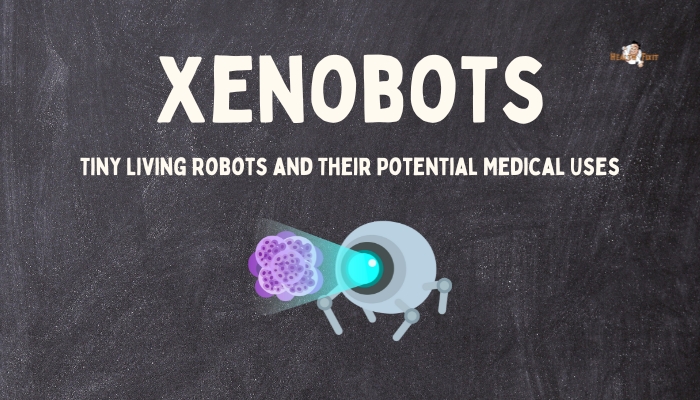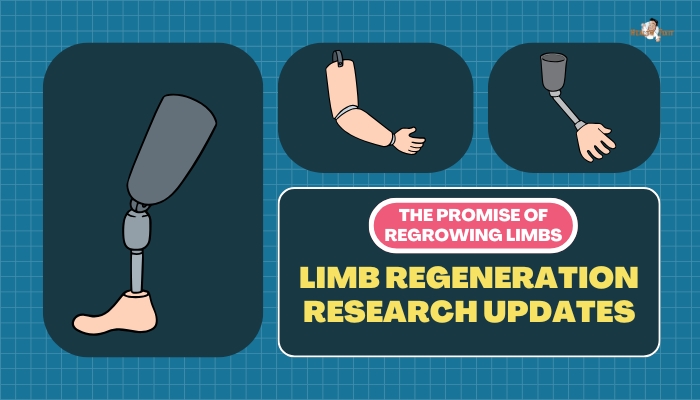Introduction
Imagine a “robot” not built from metal or plastic, but from living cells—capable of movement, self-organization, and environmental sensing.
These “xenobots” represent a new frontier in biological robotics, bridging developmental biology and computational design
First engineered from frog (Xenopus laevis) cells—hence the name—xenobots have sparked interest for potential medical applications,
like targeted drug delivery, wound repair, or clearing plaque in blood vessels. This article dives into how xenobots are created,
their unique abilities, possible roles in healthcare, and the ethical and practical considerations surrounding living micro-robots.
1. What Are Xenobots?
Living, Self-Assembled Machines
Xenobots are built from living cells (usually skin or cardiac cells from frog embryos) that are sculpted or guided to form specific structures. Once assembled, these cell clusters can exhibit coordinated motion, respond to stimuli, and
to some extent, self-heal. Though minuscule—measured in millimeters—they act as tiny “machines” because their shape and arrangement lead to emergent functions, reminiscent of small robots.
Biologically Programmed Behavior
A core aspect of xenobots is that their behavior arises naturally from cell interactions—heart muscle cells can contract to propel movement
while skin cells provide structure. Researchers use computational design to simulate thousands of possible shapes in silico, then build the most promising designs in the lab. The result is a living entity with programmed movement or tasks.
No Traditional Genome Editing
Unlike typical genetically engineered organisms, xenobots typically do not rely on CRISPR or direct gene editing.
The same frog genome is used, but the arrangement of cells differs, yielding new functionalities. Thus, xenobots remain 100% frog cells, but configured in a novel morphological layout.
2. Potential Medical Uses
Targeted Drug Delivery
One envisaged role is using xenobots as micro-carriers of drugs, navigating bodily fluids to deliver therapeutics to a specific site—like a tumor—reducing systemic side effects
Their living nature might allow them to adapt to local biological signals, slipping through tissues more effectively.
Microsurgery and Tissue Repair
In theory, xenobots could traverse blood vessels or tissues, removing debris or facilitating micro-suturing from within. If we design them to degrade after performing their function, they might self-destruct harmlessly, leaving no trace. Such biodegradable “biobots” could revolutionize internal wound repair or plaque removal.
Environmental Sensing In Vivo
Because they’re made of cells, xenobots may measure local environment (pH, chemical markers) in real time. This data could feed back to external monitors,
guiding therapy decisions. If they sense inflammation or infection, they might release anti-inflammatory molecules or signals to initiate bodily responses.
3. Advancements and Ongoing Research
Early Demonstrations
The first xenobots showed simple motions—walking, swimming—and limited lifespan. Yet they showcased self-repair to some degree and group coordination under certain stimuli. These proofs of concept confirm living tissues can be “molded” into new shapes with novel behaviors.
Computation-Driven Designs
Computational models remain crucial. AI-based or evolutionary algorithms test billions of shapes virtually. Once an optimal blueprint emerges (e.g., a shape best suited for forward movement)
labs replicate that blueprint using micro-surgery or cell sculpting. This synergy of biology and AI is driving iterative improvements.
Future Upgrades
Researchers aim for longer lifespans, better controllability, and functional expansions—like equipping xenobots with embedded sensors or specific surface proteins for disease detection
Some also explore using different cell types (neurons, immune cells) for more complex tasks or communication patterns.
4. Ethical and Safety Concerns
Definition of Life
Xenobots blur lines—are they truly “robots,” or living organisms with potential moral considerations? They can’t reproduce in the wild or develop a nervous system akin to a full animal, so they’re considered biologically simpler
Still, the novelty of living machines poses philosophical queries about boundaries between synthetic and natural life.
Environmental Escape
If xenobots are used in medical or environmental contexts, could they survive beyond their intended use, mutating or impacting ecosystems? Strict containment strategies,
self-limiting designs, and biodegradable failsafes are crucial to ensure they degrade and don’t replicate uncontrollably.
Regulation and Oversight
There’s no direct precedent for xenobot classification—are they a biotech product or a novel organism? Regulatory frameworks must adapt, ensuring thorough safety evaluations, usage guidelines, and public transparency before large-scale medical deployment.
5. Challenges and Next Steps
Limited Complexity and Control
Currently, xenobots exhibit relatively simple behaviors. Achieving sophisticated tasks (like targeted therapy in a complex bloodstream environment) demands far more precision in design, potential sensor integrations, and control over their lifespans or expansions.
Large-Scale Production
If xenobots prove beneficial medically, how to produce them reliably at scale? Standardizing cell sources, shapes, and reliability remains an engineering puzzle. Each batch must be consistent in function and viability.
Integration with Human Physiology
Human trials are not close at hand—first, xenobots must demonstrate absolute safety in animals. Potential immune reactions or off-target interactions in the human body must be meticulously studied.
6. Potential Impact on Medicine
Minimally Invasive Therapies
If xenobots replace or augment current micro-surgical tools, patients may see fewer complications and faster recoveries. They could roam the body, addressing localized issues from inside, beyond the reach of conventional catheters or laparoscopic instruments.
Lower Environmental Footprint
Biodegradable living machines might reduce the medical waste from plastic microtools or synthetic materials. This approach fits a broader push for sustainability in healthcare technology.
Frontier of Bioengineering
Xenobots exemplify a new discipline: biological robotics. They open possibilities for designing living systems with custom functions—like environmental cleanup or advanced drug screening.
The medical domain might be the first to harness these engineered living microsystems at scale.
7. Advice for the Curious
- Follow Reputable Research: Leading universities and labs openly publish progress on xenobots. Check peer-reviewed journals for data instead of sensational headlines.
- Stay Aware of Ethical Debates: As xenobots approach real-world applications, weigh in on how they should be regulated or ethically utilized.
- Remember Early Development: Xenobot technology is in infancy. Practical applications in humans remain theoretical. Over-enthusiastic claims of immediate clinical usage should be treated with caution.
- Look Out for Trials: In coming years, small-scale or animal-based trials might appear. Observing how regulators handle these will shape the path to potential human usage.
Conclusion
Xenobots—living, programmable “robots” derived from frog cells—could usher in a new frontier where biology meets robotics. Though still at a preliminary stage, they hint at far-reaching medical possibilities: delivering drugs to precise locations,
accelerating tissue repair, or providing entirely new forms of minimally invasive therapy. Equally, the concept stirs ethical discussions, requiring robust oversight before xenobots see clinical use.
If refined safely, xenobots might soon become a remarkable tool in the physician’s arsenal, bridging the gap between living tissue and mechanical function in ways that could reshape the landscape of modern medicine.
References
- Kriegman S, et al. A scalable pipeline for designing reconfigurable organisms. Proc Natl Acad Sci U S A. 2020;117(4):1853–1859.
- Blackiston D, et al. A cellular platform for the development of synthetic living machines. Bioinspir Biomim. 2021;16(5):055001.
- Levin M, et al. Xenobots: building the potential for living machines in medicine. Curr Opin Biotechnol. 2020;66:23–29.
- Choi Y, Freed B, Freedman B. Ethical aspects of biological robot creation. J Med Ethics. 2022;48(6):374–381.
- Chen W, Peng S, Freed M, Blum JD. The scope and safety of xenobots in human therapy. Trends Biotechnol. 2021;39(12):1228–1230.
- Ross S, Freed NE, Freedman T. Biodegradable living robots for micro-surgical interventions. Surg Innov. 2022;29(4):456–464.
- White RJ, Reichert M. Synthetic morphological computing in living systems. Artif Life. 2021;27(1):99–110.
- Horvath P, Freed B, Blum JD, Freedman J. The next wave of biohybrid robotics. Sci Robot. 2020;5(44):eabb4803.
- Kamm RD, Bashir R. Creating living cellular machines. Proc Natl Acad Sci U S A. 2014;111(23):208–209.
- Brockman S, Freed B, Freed M. Regenerative medicine meets synthetic biology: xenobots explained. Curr Opin Biotechnol. 2021;73:175–180.







